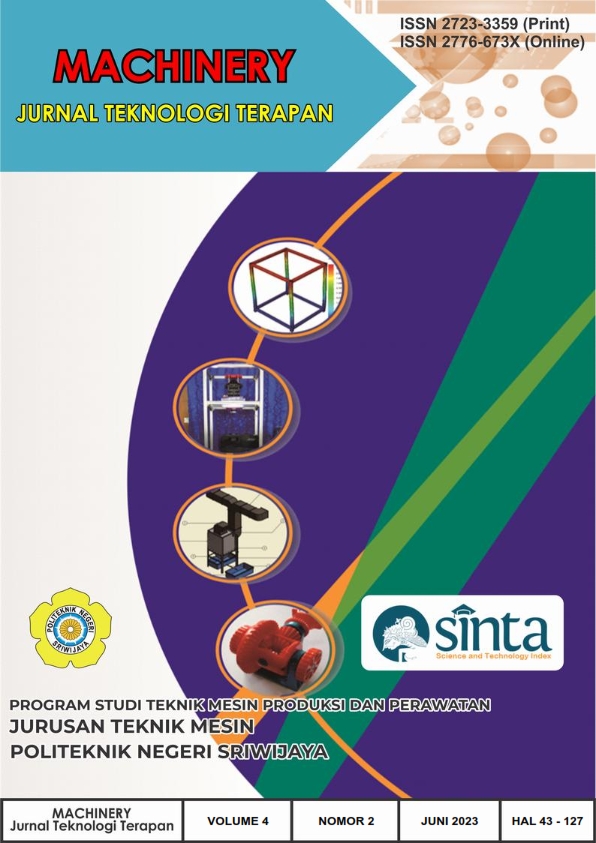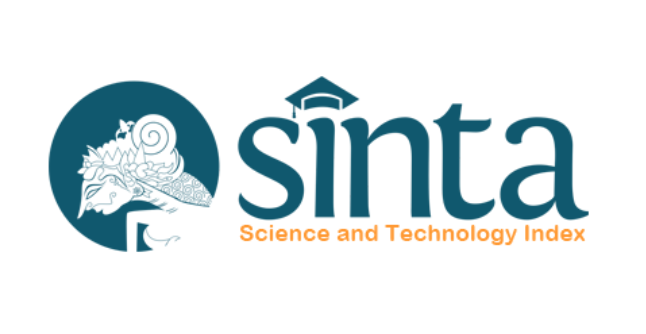PENGUJIAN KEKASARAN MOLDING BERBASIS ADDITIVE MANUFACTURING MENGGUNAKAN 3D PRINTING MATERIAL ACRYLONITRILE BUTADIENE STYRYNE
DOI:
https://doi.org/10.5281/zenodo.8048540Keywords:
3D Printing, Molding, Acrylonitrile Butadiene Styrene, Roughness, ANOVAAbstract
Technological developments move very quickly. Machines are one of the technologies that were created, from existing machines being innovated according to the needs of the times, one of which is 3D Printing. This machine has a special sophistication, which is capable of printing in the form of a prototype whose form is with a drawing on the design in a CAD/CAM application. using Acrylonitrile Butadiene Styrene material. The reason for this test is because the cost of mold production is cheaper than using a molding machine that is commonly used in general, the level of precision is higher than making molding using conventional machines. The method of analysis used the experimental method to determine the effect of treatment on other factors under controlled conditions. Where the resulting mold is tested for surface roughness. From the test results, the data used will be obtained in the form of statistical data analysis, which is carried out using the Analysis of Variance (ANOVA). The analysis that has been applied, concluded that the layer height: low, standard, high has an effect on the roughness of the printed molding, and it can be proven by Fcount 13.026 > Ftable 2.56. with a significant 0.014 < 0.05. The lowest roughness results are printed using a layer height: 0.16 mm/s (high quality).
Downloads
References
Bhatia, U. (2015). 3D printing technology. International Journal of Engineering and Technical Research, 3(2), 327–330.
H. Basri, dkk . 2020 . Sosialisasi Dan Pelatihan Penggunaan Mesin Cetak 3d Tipe Fdm Bagi Guru Smk Dan UMKM Sektor Industri Kreatif Seminar Nasional AVoER XII 2020 Palembang
Junaidi. 2010. Titik Persentase Distribusi F probabilitas: 0,05. (Online). http://junaidichaniago.wordpress.com
M. Abby Rafdi Syah. 2021. Mengenal 3D printing. Journalism and Website Division Staff - Humas Elektro ITK
Saifuddin. Usman, R. Dan Zuhaimi. 2018. “Pembuatan Gelas Dengan Bahan Polypropylene Menggunakan Cetakan Plastikâ€. Teknik Mesin, Politeknik Negeri Lhokseumawe Aceh
Salbiah, Nur. 2021. “Analisa Kekasaran Permukaan Paduan Alumunium Pada Proses Pembubutan Menggunakan Pahat Hasil Carburizingâ€. Skripsi tidak diterbitkan. Politeknik Negeri Sriwijaya.
Setiawan, wahyu. 2021. Analisa pengaruh Kecepatan Putaran Mesin Bubut Terhadap Kekasaran permukaan Poros Menggunakan Pahan Bahan Pegas Daun Mobil Pada Material Alumunium Seri 6061. Tugas Akhir TMPP. Politeknik Negeri Sriwijaya.
Yuwono Budi Pratiknyo. 2012. penyiapan sumber daya di bidang molding. Artikel humas Universitas Surabaya (UBAYA).
Downloads
Published
How to Cite
Issue
Section
License
Copyright (c) 2023 Authors and Publisher

This work is licensed under a Creative Commons Attribution-NonCommercial-NoDerivatives 4.0 International License.
The Authors submitting a manuscript do so on the understanding that if accepted for publication, copyright of the article shall be assigned to MACHINERY: Jurnal Teknologi Terapan as publisher of the journal. Copyright encompasses rights to reproduce and deliver the article in all form and media, including reprints, photographs, microfilms, and any other similar reproductions, as well as translations.Â
MACHINERY: Jurnal Teknologi Terapan and the Editors make every effort to ensure that no wrong or misleading data, opinions or statements be published in the journal. In any way, the contents of the articles and advertisements published in MACHINERY: Jurnal Teknologi Terapan are the sole responsibility of their respective authors and advertisers.








